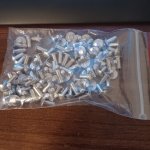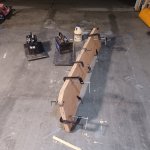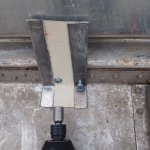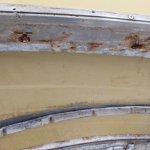Here was my thought process for rivet selection, not to convince anyone on my choices, but to gives others in the future some more to think about.
The originals in my case are dimpled, indicating a 2117 alloy (or at least a hardened aluminum alloy). These have lasted 50+ years on this boat without loosening, so I will trust them to work. This is also the safest bet for rivets that are part of the original structure.
I'm not convinced that the 18-8 (not sure about 3xx series stainless) stainless would lose their grip/elongate over time. Their rated tensile is close to that of the solids, so they theoretically shouldn't be any worse off. That said, vibrations can do weird things to different materials, and this is untested from what I've seen. My guess is that the reports of closed end blind rivets being loose may have been from aluminum rivets, which are much weaker than solids.
I also ran a few thermal contraction stress equations and from that I don't see differential expansion/contraction causing anything near yield levels between -15 to 130 F for stainless rivet/aluminum sheet. On the cold end the aluminum should tighten on the stainless. On the hot end these could possibly become slightly loose, but I will also epoxy coat before install, and the epoxy expands at a higher rate than either metal, so should continue to seal.
There also seems to be as many report of loosening blind rivets as there are reports of the opposite.
For 100 solid rivets and the air hammer setting tool, it cost the same as 100 closed end 18-8, I already have the air compressor and air hammer. It would be cheaper if I was installing more. I decided the aluminum closed end rivets would be too weak for anywhere with a load, so they needed to be replaced in my planning. Since it made sense to replace the original solids with the same type, then the stainless blinds could tie the tabs to the hull bottom and sides. The blinds are less tested in my mind so safer to use in a location of lesser stress. If I hadn't already bought the blind rivets, I would use solids all around now. If someone doesn't have access to the air compressor and air hammer already, or absolutely cannot find help, it might make sense to use closed end blind rivets, but ONLY if they are 18-8 stainless and you plan to coat them before install.
I probably have repeated myself on some of this, sorry about that. Hopefully it can be beneficial to future restorations, though.

























